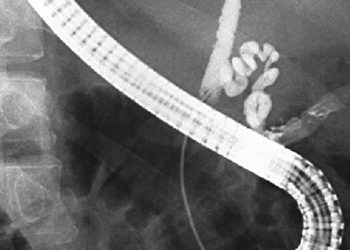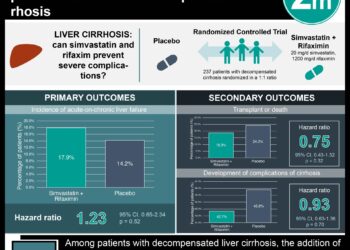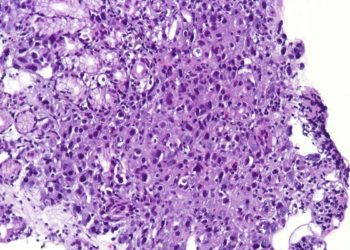[Featured] Elevated systolic blood pressure linked to white matter brain damage in young adults
Image: CC
Key study points:
- Hypertension is a risk factor for structural white matter damage in younger adults even in the absence of radiographically identifiable damage on standard MRI.
- Early detection and treatment of hypertension is critical to preventing cerebral end-organ damage from elevated systolic blood pressure.
Primer: Vascular pathology is a well-recognized contributor to cognitive impairment and dementia in aging adults, and contributes to any number of syndromes across the spectrum of Vascular Cognitive Impairment (VCI) up to the most severe form, termed Vascular Dementia (VaD). According to recent estimates, the prevalence of VaD doubles every 5.3 years in affluent countries. In particular, hypertension is a VaD risk factor of considerable importance, as it is common amongst adults in the United States and continues to become increasingly prevalent, affecting 50 million Americans as of 2003 (3). Analysis of Framingham Heart Study data has already revealed a significant correlation between hypertension and the volume of white matter (WM) hyperintensities, even when adjusted for age and sex.
Arteriosclerosis has been suggested as the pathologic link between hypertension and white matter damage. In this model, chronically elevated systolic blood pressure (SBP) leads to damage of medium and small vessels feeding the brain. The resulting hardening of these arteries predisposes dependent brain regions to ischemic damage, leading to atrophy and the characteristic white matter hyperintensities (WMH) commonly seen on magnetic resonance imaging (MRI) in aging hypertensive patients. However, the pathologic processes preceding these findings are difficult to characterize using standard MRI. Diffusion tensor imaging (DTI) combines probabilistic maps of WM tracts with data from diffusion-weighted MRI to produce a representative “map” of an individual’s WM tracts, revealing more subtle alterations in structural integrity than standard MRI.
In the present study, this technique was applied to imaging data from younger patients in order to better characterize the early effects of hypertension on white matter integrity.
Background reading:
- Stroke Risk Profile Predicts White Matter Hyperintensity Volume
- AHA/ASA Scientific Statement: Vascular Contributions to Cognitive Impairment and Dementia
- The Seventh Report of the Joint National Committee on Prevention, Detection, Evaluation, and Treatment of High Blood Pressure (JNC 7)
This [cross-sectional cohort] study: 579 participants from the third generation of the Framingham Heart Study (mean age 39.2 years) received a brain MRI, which was analyzed for white matter hyperintensity volume, grey matter atrophy, and microstructural white matter integrity. Participants were also stratified by blood pressure based on JNC 7 criteria. Increased SBP was significantly associated with white matter damage on DTI (represented by increased mean diffusivity and decreased fractional anisotropy) in the anterior corpus callosum, inferior fronto-occipital fascicule, and projections from the thalamus to the superior frontal gyrus. Increased SBP was significantly associated with highly localized gray matter atrophy in the hippocampus and middle temporal gyrus. No association was found between SBP and WMH volume, though the total WMH burden was low. Of note, age was strongly correlated with all measures above.
In sum: The present study demonstrates a deleterious effect of elevated SBP on brain structural integrity prior to the radiographic appearance of the widespread grey matter atrophy and white matter hyperintensities that characterize later disease. The use of advanced imaging such as diffusion tensor imaging provides an opportunity to see these deleterious effects that have presumably not yet manifested on standard MRI sequences. The results are particularly noteworthy given the young age of the patients in this study (mean age 39), reinforcing the notion that vascular dementia can be the end result of repeated insults over many years of hypertension.
Despite its strengths, the study sample raises questions as it had a slight but statistically significantly decreased mean SBP and lower proportion of patients being treated for hypertension when compared with the third generation of the Framingham Heart Study as a whole. Additionally, the authors did not examine cognitive function in these patients, which limits the ability to correlate the observed structural WM damage with concrete clinical findings. Nevertheless, as deleterious effects are visible using diffusion tensor imaging prior to clinical manifestations, this study supports the need of early detection and management of hypertension in younger adult patients in order to minimize and prevent long-term consequences.
Click to read the study in Lancet Neurology
Click to read an accompanying editorial in Lancet Neurology
By [JD] and [RR]
Follow us on Twitter and Facebook
More from this author: Retired NFL players are at increased risk of death due to neurodegenerative disease, Asymptomatic carotid stenosis increases risk for cognitive dysfunction, Cognitive dysfunction is common in lacunar stroke patients
© 2012 2minutemedicine.com. All rights reserved. No works may be reproduced without written consent from 2minutemedicine.com. Disclaimer: We present factual information directly from peer reviewed medical journals. No post should be construed as medical advice and is not intended as such by the authors or by 2minutemedicine.com. PLEASE SEE A HEALTHCARE PROVIDER IN YOUR AREA IF YOU SEEK MEDICAL ADVICE OF ANY SORT.





![[Physician Comment] The extent of C. difficile infections may not differ in light of immune status](https://www.2minutemedicine.com/wp-content/uploads/2012/11/x800px-Clostridium_difficile_01-e1353335581537.jpg.pagespeed.ic_.We5DxZl6Ye-75x75.jpg)